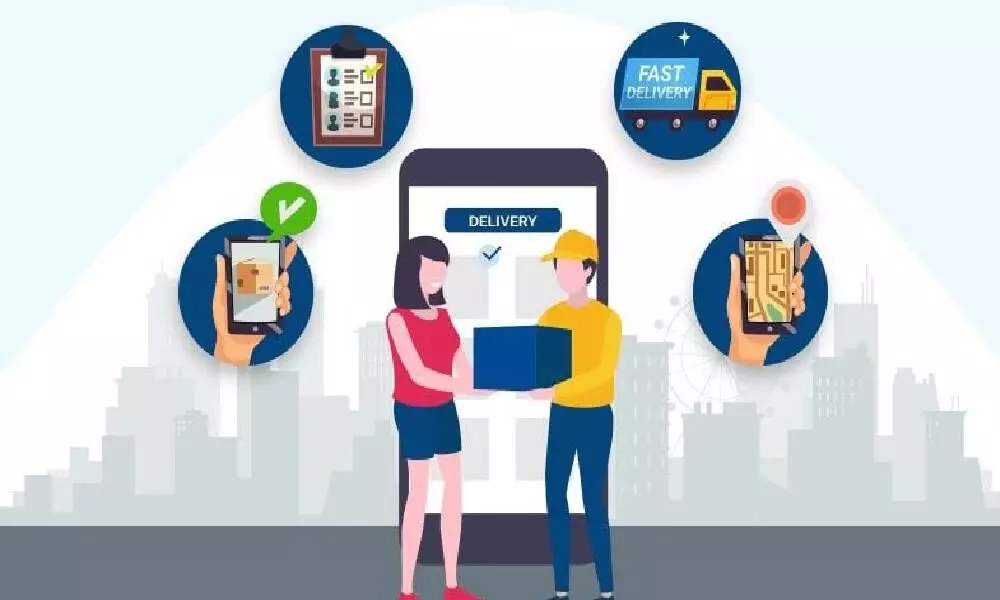Reducing last-mile cost can improve delivery margins
Optimizing last mile delivery can result in significant savings for e-commerce businesses and retailers, especially as the number of shipments across most industries continues to skyrocket
image for illustrative purpose

Consumer buying behaviours have changed, especially when it comes to online shopping. Today's consumers expect cheap - or, better yet, free and fast delivery. So, in order to stay competitive, companies need to find a way to improve efficiency and cut costs in order to fund their shipping logistics.
A big part of this boils down to a company's last mile delivery process. That means, for a company to survive in this market, they need to find ways to improve efficiency in this area. Last mile delivery refers to the very last step of the delivery process when a parcel is moved from a transportation hub to its final destination - which, usually, is a personal residence or retail store.
This is the most critical step in the delivery process, and the one that businesses want to ensure is as quick and efficient as possible. This is to keep up with the continually increasing consumer demand for speedy shipping, especially in e-commerce, food, and retail industries. It also happens to be the most expensive leg of the journey that goods take to reach their ultimate destination.
But with how easy it is for customers to find an alternative place to shop, companies can't afford to disappoint them. Which means companies have to foot that cost.
Last mile shipping can account for 53 per cent of a shipment's total costs. Companies typically eat about 25 per cent of that cost themselves, but this number is increasing as supply chain inefficiencies are becoming more and more costly. Optimizing last mile delivery can result in significant savings for e-commerce businesses and retailers, especially as the number of shipments across most industries continues to skyrocket.
In an industry study, 56 per cent of consumers demanded greater transparency in the delivery process. Old-school last mile delivery carriers have improved their package traceability, adding features like proof of delivery and tracking information.
More and more companies have started using their own in-home delivery service - including e-commerce giant, Amazon. In-house delivery means a company has its own fleet of delivery vehicles and salaried drivers to get shipments from their warehouses out to customers. This allows companies to control costs and customer experience and expand their delivery window, some even opting to deliver late in the evenings and weekends.
However, while many retail companies have been able to bring their delivery time down to two days, Amazon is still in the lead, delivering parcels in as little as two hours. So competitors have to catch up.
The crowdsourcing model has been prevalent in transportation, hospitality, and food delivery for some time now, and retailers are eyeing its low startup costs, asset-light operations, and improved customer experience to ease their last mile delivery woes.
With crowdsource technology, retailers, logistics partners, and consumers can connect directly with local, non-professional couriers who use their own transportation to make deliveries. Companies can get their online orders to customers faster, and customers can get their items when and where they want them. The freedom to make on-demand and scheduled deliveries also ensures that customers are home at the time of delivery - eliminating the need for a second (or third) attempt.
And with the ongoing integration and enhancement of automation across industries, it's likely we'll start seeing delivery robots, drones, and self-driving vehicles making many of these drop-offs in the not-so-far future.
The rise of ecommerce has catapulted electric vehicles to prominence. Concern about greenhouse gas emissions is driving the move away from diesel delivery vehicles towards trucks and vans using alternative power sources. Electric vehicles with a range of up to 150 miles are ideally suited to "last mile" deliveries, those with a limited radius. Amazon claims it delivered in 2020 more than 20 million packages in electric vehicles across North America and Europe.
Covid-19 has made companies realize the need to digitalize their businesses as supply chain logistics plays a very big role. They can read, reduce the cost, if they can bring transparency and provide a better customer experience and reduce the inventory, it changes the profitability. Delaying the implementation of efficient operations and reliable digital systems sets companies in a weak position because calibrating to the changing customer demands can become very difficult. It is hard to predict the outcomes of the Covid-19 impact. Still, there is one conclusion the industry can already predict - customers' behaviour has been changed irreversibly, and supply chain players have to cater to that change today and prepare for a different tomorrow.

